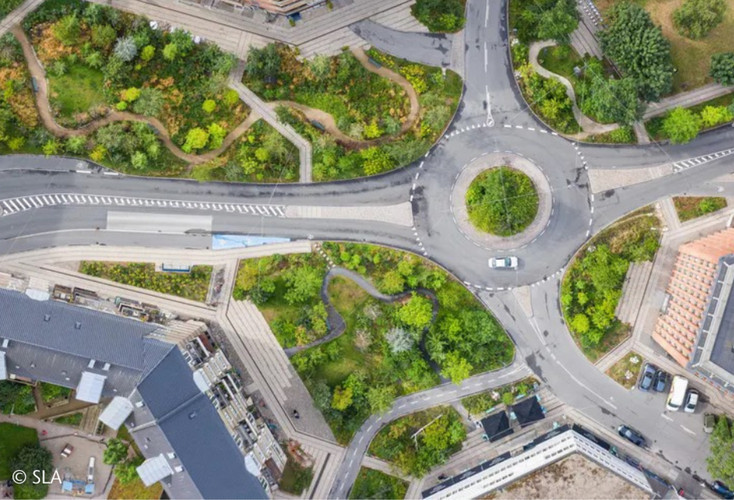The Sankt Kjelds Plats and Bryggervangen were transformed into a vibrant biodiverse city centre, that offers many social opportunities. The design is based around nature and therefore increases biodiversity in the city. It also decreases the urban heat island effect. In addition to this, the newly transformed area reduces noise and air pollution and therefore increases the health and wellbeing of the locals.
Sankt Kjelds Square is an outstanding example of contemporary drainage and design. The project uses the latest strategies in climate adaptation in urban spaces and therefore offers state-of-the-art techniques for drainage. The project works with the First Flush method, with which you direct the first dirty rainwater on the roadway in the sewer. The subsequent clean water (Second Flush) leads to seepage into green areas. Thirty percent of the rainwater is handled on the surface in green areas. During heavy rainfall events, for example in case of a cloudburst, excess water is led via the sewer to the harbor.
Rather than using salt in the winter, the intention is to use Potassium Format in the area as a sludge control, which enables seepage into green areas to a much greater extent. Large Line drainage channels from ACO are used to collect and transport rainwater from the sidewalks and the roads. Overall, the area secures more than 34 000 square meters for flooding by storing and delaying rainwater- as a part of Copenhagen's “climate district” initiative the project plays a vital role in Copenhagen's strategy for heavy rain events.





